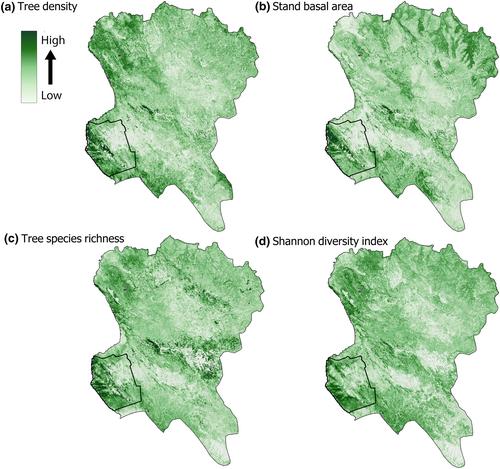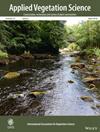Development of spatial models and maps for tree species diversity and biomass in a miombo ecosystem, western Tanzania
Abstract
Aim
Miombo, a prominent dry forest formation, holds ecological importance for both humans and wildlife. Trees are a driving force behind miombo dynamics, thus, spatially explicit metrics of tree cover are essential for evaluating habitat characteristics, resource availability, and environmental change. We developed predictive models and maps of tree species diversity and biomass within a previously undescribed landscape.
Location
Mahale Mountains National Park (MMNP), Greater Mahale Ecosystem (GME), Tanzania.
Methods
We created models of tree density, basal area, tree species richness, and tree diversity according to the Shannon Diversity Index. We created a predictive model using an ensemble modeling approach using plot-based data from MMNP and predictor variables derived from satellite data associated with climate, habitat structure, plant productivity, and topography. We assessed predictor importance across models and produced maps based on model predictions and compared them to land cover type and protective status.
Results
Results revealed strong positive correlations between tree metrics (r ≥ 0.70) and substantial overlap in the selection and relative importance of predictors. Canopy height was the most important predictor across models, followed by climate and topography predictors associated with energy. Predictors derived from the soil-adjusted vegetation index were also valuable. Model performances ranged from R2 values of 0.45 to 0.55, with tree density performing best. Maps show high tree species diversity and biomass in protected areas.
Conclusions
This study and the maps it produced provide a baseline for land management and future modeling efforts in the GME. Our results highlight the contribution of a wide variety of environmental predictors and the importance of a select few. We confirmed the importance of the current protected area network where conservation efforts align, and help sustain, an abundance and diversity of trees. Current and historical disturbance-related predictors should be considered to address remaining unexplained variance.


 求助内容:
求助内容: 应助结果提醒方式:
应助结果提醒方式:


